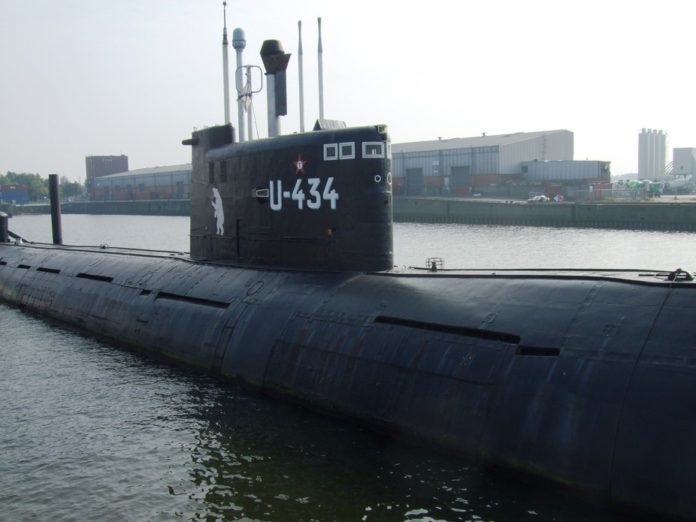
By Daniel Steed, University of Exeter
Rumours of a Russian submarine hanging around off the coast of Sweden have inspired much Cold War nostalgia. But while there is of course the chance that something fishy is going on, there are many plausible explanations as to why a vessel might prowl about in foreign waters. In fact, it happens all the time.
The Swedish military has reported detecting underwater activity in its seas and has already spent several days searching for what it suspects to be a Russian submarine. The incident has been referred to by many as reminiscent of a Cold War spy novel – a view only reinforced by the very public reaction of the local government.
Sweden has committed significant naval resources to the hunt for the mystery vessel, and Rear Admiral Anders Grenstad has now said his troops are prepared to use armed force to bring the submarine to the surface if the hunt is successful.
Conjecture is flying and Russia continues to fuel speculation by denying any involvement. But rather than viewing this incident as an extraordinary occurrence, we should treat it as a rare glimpse into the murky world of submarine operations. This is business as usual for submariners. The only thing extraordinary about the situation in Sweden is that it has become such a public affair.
There are several reasons why a submarine would be active in the territorial waters of other nations, each of which provide insight into the activities of some of the most expensive yet capable pieces of military hardware on the planet.
Just passing through?
For a start, this submarine could be capability testing. Modern submarines contain numerous pieces of equipment that need to be tried out so that they can be ready in the event of war. Personnel need to be trained to use them and practice with them regularly. That doesn’t just mean weapon systems, either. Navigational systems and covert communications need to be rehearsed too. Testing such capabilities in the territories of other nations, without being detected, is in large measure what maintains the high operational readiness of such vessels.
It might also be survey charting. Submarines are reliant on exceptionally accurate navigational charts to avoid running aground in the middle of an operational deployment. The importance of this was made clear in 2010 when HMS Astute became trapped in shallow waters off the coast of Scotland in 2010 during a training exercise.
Submarines often map these charts themselves and the locations in which the mystery vessel has been tracked suggests that it might be on an underwater mission to survey the Swedish archipelago. This would help refine the charts for navigational purposes should there ever be any future need to infiltrate Swedish waters for other reasons.
Murkier intentions?
On the other hand, this as-yet unidentified vessel could be up to something more sinister. Submarines are capable of espionage in many forms and have long been a potent asset for gathering intelligence.
This submarine could, for example, be hiding in Swedish waters to gather intelligence on the state of the country’s defences and learn about the anti-submarine methods of the Swedish navy. Or it might be collecting electronic interceptions from numerous targets in the area. A third possibility is that the submarine is communicating with covert operatives. These vessels are able to make secure contact with spies or other friendly faces on land and unsubstantiated claims of a mystery man in black appearing on the shore would appear to lend credence to this scenario – although it is an unlikely one.
And of course, it is also possible that this is an exercise in posturing on the part of Russia. With a significant chilling in relations between Russia and Western Europe over the past year and the ongoing situation in Ukraine, it is possible that the submarine has deliberately allowed itself to be detected. Russia may simply be flexing its muscles to show European nations that it remains capable of significant military action and that it is able to breach the territorial integrity of any nation if it chooses to.
Whatever the motivations behind the incursion, it is not particularly unusual. Russia might be attracting suspicion for all kinds of actions of late but the truth is, nations all over the world send their submarines out during peacetime without any of us even noticing.
![]()
Daniel Steed does not work for, consult to, own shares in or receive funding from any company or organisation that would benefit from this article, and has no relevant affiliations.
This article was originally published on The Conversation.
Read the original article.




















